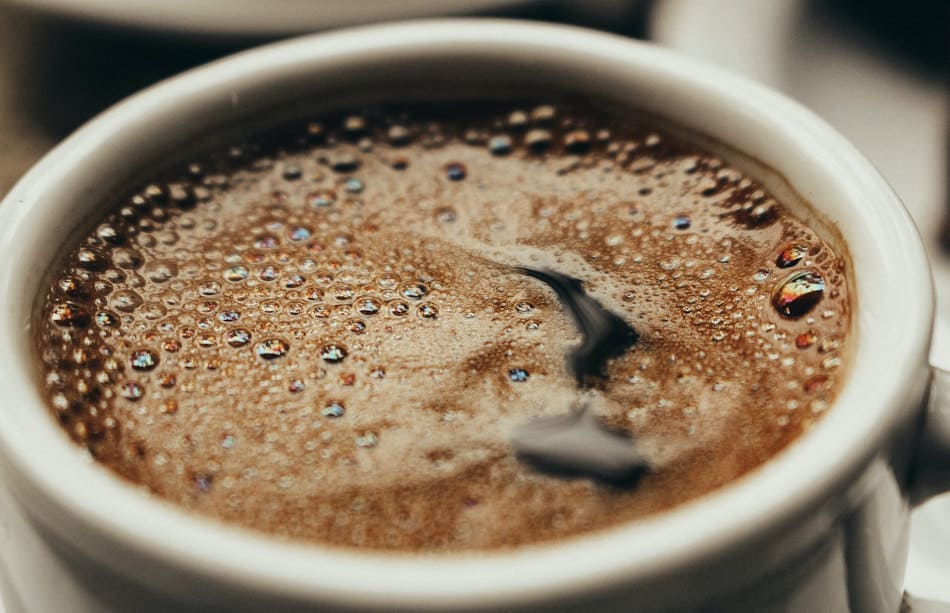Arabica coffee is the widely consumed type of coffee in the world, and if you’ve taken a cup of coffee at home, at work, or the best quality coffee shop near you, then you know its taste. There are many variations in the global market, and the answer to whether it’s sweet or sour is determined by several factors.
Arabica coffee is not sour if prepared correctly. Arabica bean is sweeter and less caffeinated when compared to other beans, such as Robusta. However, it can taste sour because something may have gone wrong in the extraction, brewing, roasting process, stale beans, or dirty equipment.
This article highlights why Arabica coffee may taste sour and how to get rid of the taste. Keep reading to learn more about this famous beverage.
Why Arabica Coffee Is Not Sour
Typically, Arabica coffee doesn’t taste sour, although other varieties such as Robusta may taste as such. The sour taste may be due to low-quality beans, though the main reason is over roasting. Caffeine is the compound responsible for the sour or bitter taste in coffee.
High-quality Arabica coffee has less caffeine compared to Robusta coffee. Besides, the Arabica coffee has sugars that cancel out with bitter or sour taste. Therefore, Arabica coffee that has been grown roasted and brewed correctly has a sweet taste.

What May Make Arabica Coffee Taste Sour?
Several factors can contribute to Arabica coffee’s sour taste. These include roasting, the extraction process, and the selection of beans. However, the primary reasons for sour taste are under-roasting, over-roasting, and poor brewing.
Typically, roasted coffee beans retain their freshness for a long time, and it’s not likely you’ll buy spoiled ones. However, if you accidentally purchase stale beans and brew them, don’t expect a sweet cup. They will taste sour or bitter and could have a smell; otherwise, arabica coffee is always fresh and has a sweet taste.
When the coffee beans are roasted, the sugars in the coffee are cooked. They caramelize in the process, and the coffee beans turn from green to tan and eventually to brown. If the coffee beans were roasted correctly, the right amount of sugars would caramelize, and the end product is not sour or bitter.
However, if the coffee beans are roasted for long, the sugars will burn, and if the roasting continues even for a more extended period, the beans would burn to charcoal and become very bitter.
How to Get Rid of the Sour or Bitter Taste in Your Coffee?
Even the most experienced barista could easily make a terrible cup of coffee once in a while. People make errors all the time by over-extracting, using very little water, and the wrong temperature. Getting rid of the sour taste to make the coffee taste requires little to no effort.
Luckily, coffee lovers have presented several ways, ideas, and personal experiences to help you fix the problem. Some suggest adding a pinch of salt to balance the flavors while others add more milk and sugar to make it taste.
While these two methods work great, it’s best to seek long term solutions to the problem. Clean your tools and filters, use the right amount of water, and grind to the correct size.
Brewing the Perfect Cup
A good cup of coffee starts with fresh, high-quality beans. Arabica coffee is the best option for most people, but not all Arabica beans taste the same. Several factors contribute to flavor variations and quality. Some examples include the climate they’re grown in, the farming practices, harvesting, storage method, brewing process, etc.
No matter where your beans come from, you need to make sure they’re fresh and ready for brewing. Always buy coffee beans in small quantities as soon as they’re roasted for long-lasting freshness. This way, you will only store them for a shorter period and only use fresh ones.
Learning how to make the perfect cup is determined by personal taste. If you’re having trouble, you can learn how to brew coffee professionally.
First, you’ll need clean tools so, if you own an espresso machine, French press, or pour-over coffee maker, flush with hot water to clear the oils that may have been left behind in your last extraction. Oils and other particles give the coffee a sharp sour taste, and that’s what you want to avoid.
Once your equipment is set up, clean, and ready to use, the next thing is to follow a prescribed extraction method. You want to use the right amount of water under the right temperature; between 195°F and 205°F (90°C and 96°C). Each grain requires enough water to extract and balance all the essential flavors.
You also want to grind the beans to the right size. If you grind the beans too coarsely, you’ll get under-extracted coffee. Setting the right size for the particles and giving the beans sufficient time to grind will ensure you extract the good flavors.
Arabica vs. Other Types of Coffee
There are about 25 to 100 species of coffee plants identified so far. However, only two types play a commercial role in the coffee industry: Arabica coffee and Robusta coffee. Arabica is believed to originate from Ethiopia, and they account for about 70% of the coffee produced in the world.
Arabica vs. Robusta
The beans of Arabica coffee are elongated and flatter compared to Robusta coffee beans. They also have lower caffeine content and command higher prices in the world market. Arabica coffee, on the other hand, is cultivated mainly in steep terrains, and they are costly to cultivate. They are also prone to diseases and require additional care.
On the other hand, Robusta coffee accounts for 30% of the global market, and they’re used mainly for blending and instant coffees. The variety has 50% to 60% more caffeine compared to Arabica coffee and their beans are relatively smaller and rounder. The trees are more resistant to parasites and diseases, and they are generally cheaper to produce.
Arabica vs. Liberica
Liberica coffee is another coffee species that accounts for about 2% of the world market. They’re also called Liberian coffee and grown mostly in the Philippines, Liberia, and Malaysia. Unfortunately, getting Liberica is quite tricky for people living in the West due to scarcity and high global demand. Liberica beans grow much bigger than Robusta and Arabica.
The trees of Liberica coffee can grow up to 20 m (66 ft) tall. They have the same taste as the Arabica, though they have a stronger and smoky aroma. Caffeine content in the Liberica beans is much lower compared to both Robusta and Arabica varieties
Knowing the difference between these three types of coffee is the first clue to determining the flavor you want in your beverage. No matter what approach you take, you will probably end up taking pure Arabica or a blend with Robusta.
Where Arabica Coffee Is Grown
Arabica coffee is grown in the hilly regions near the equator because they thrive best in tropical climates. They are found mainly in latitudes of 25 degrees North and 30 degrees South. More than 50 countries in different parts worldwide grow coffee, including:
- Mexico
- Guatemala
- Puerto Rico
- Colombia
- Panama
- Brazil
- Costa Rica
- Kenya
- Ethiopia
- Indonesia
Coffee from different regions has unique flavors, which can give Arabica coffee a wide range of flavors depending on the origin. It may taste like caramel to some people, nuts, and chocolate. Others can’t quite describe the taste because once they get a sip, their taste buds burst with flavor.
You probably drink it every day either in its pure form or blended with other coffee types in black espresso, cappuccino, cold brew, latte, iced coffee, or whatever your favorite coffee drink is.
Conclusion
Coffee is a beautiful beverage enjoyed by all cultures of the world. Arabica coffee is sweet thanks to the quality and natural flavor-rich beans. However, taking a sour cup will ruin your experience and make you hate coffee. If yours tastes sour or anything far from sweet, check on your coffee machines, the freshness of the beans, your extraction process, and the type of coffee you bought.
A lot happens before you’re served the perfect coffee cup, but finding a balance between these flavor determinants is key to the best tasting latte, cappuccino, or any other coffee beverage.
Sources:
- National Coffee Association USA: 10 Steps from Seed to Cup
- National Coffee Association USA: How to Brew Coffee
- Thought Co: Arabica Coffee Enjoyed Today and for the Past Few Millennia
- Atlas Coffee Club: Why Your Coffee Tastes Bitter & 6 Ways To Fix It
- Life Hacker: What to Do if Your Coffee Tastes Sour
- Roasty Coffee: 13 Reasons Your Coffee Tastes Bad and How to Fix it
- Home Grounds: Why Does Coffee Taste Sour?
- National Coffee Association USA: What Is Coffee?
